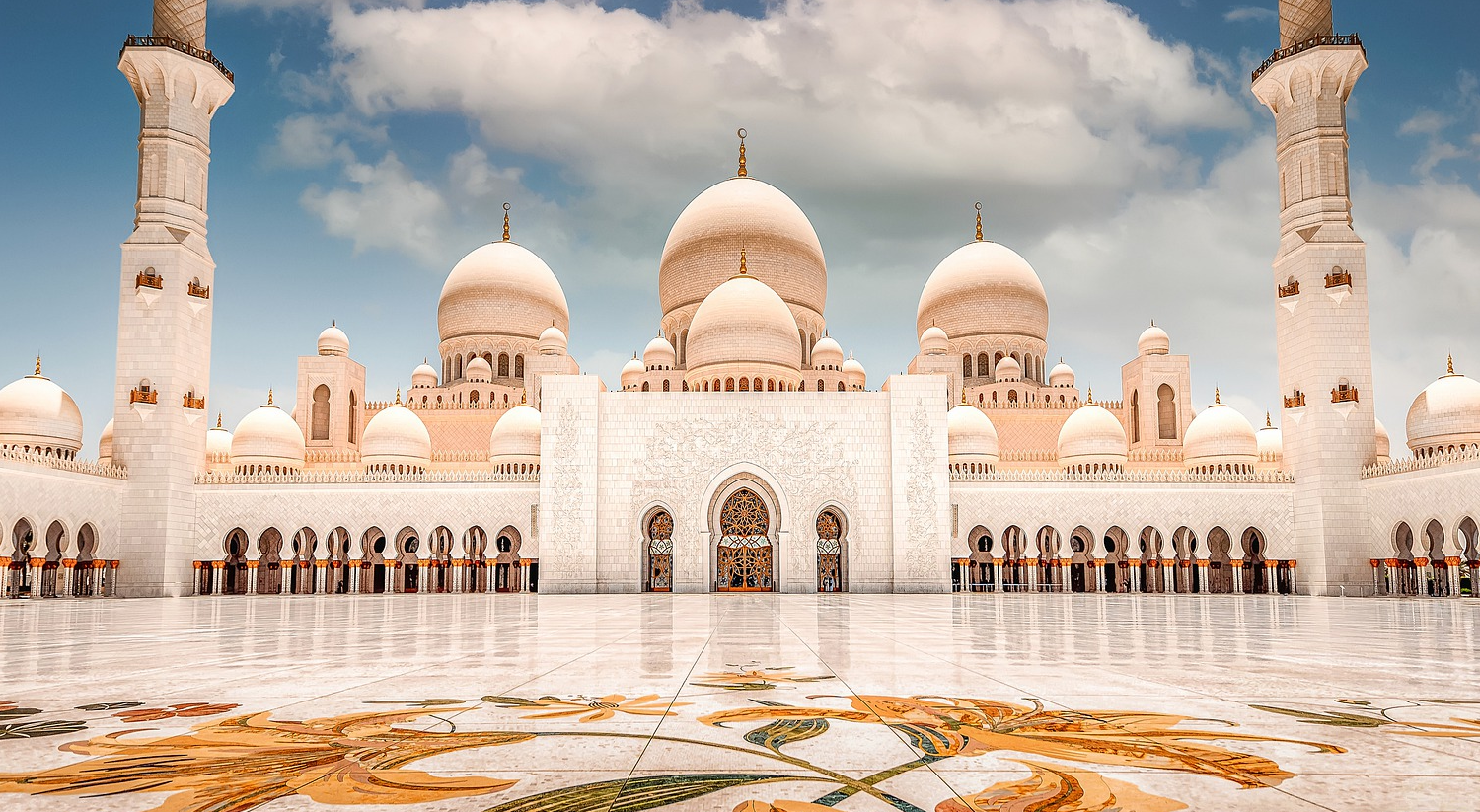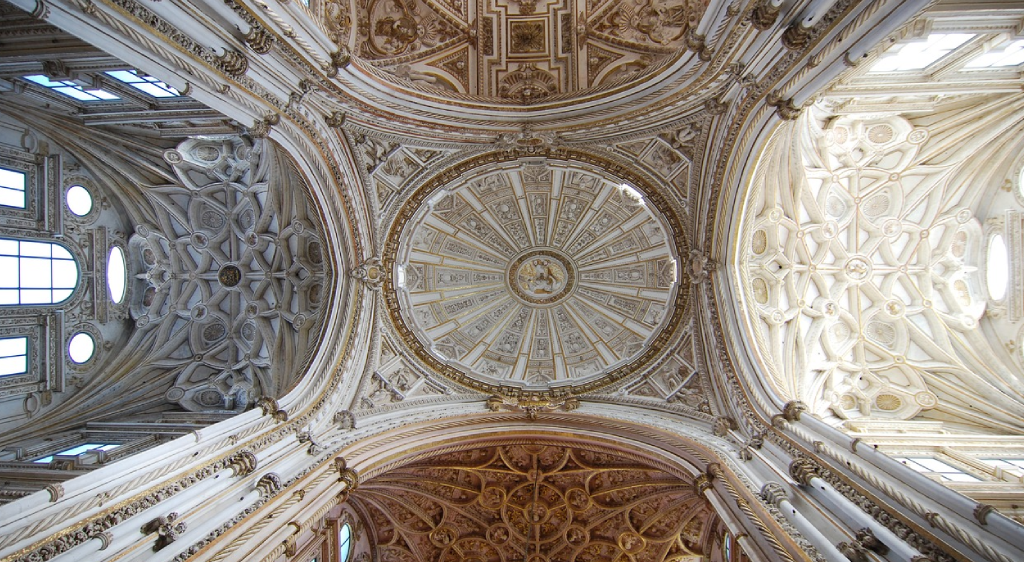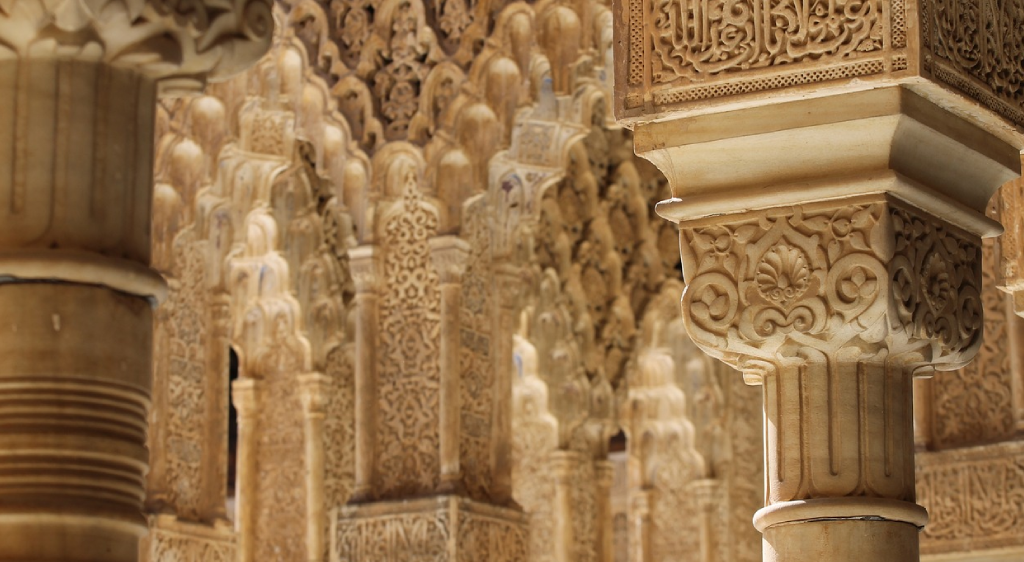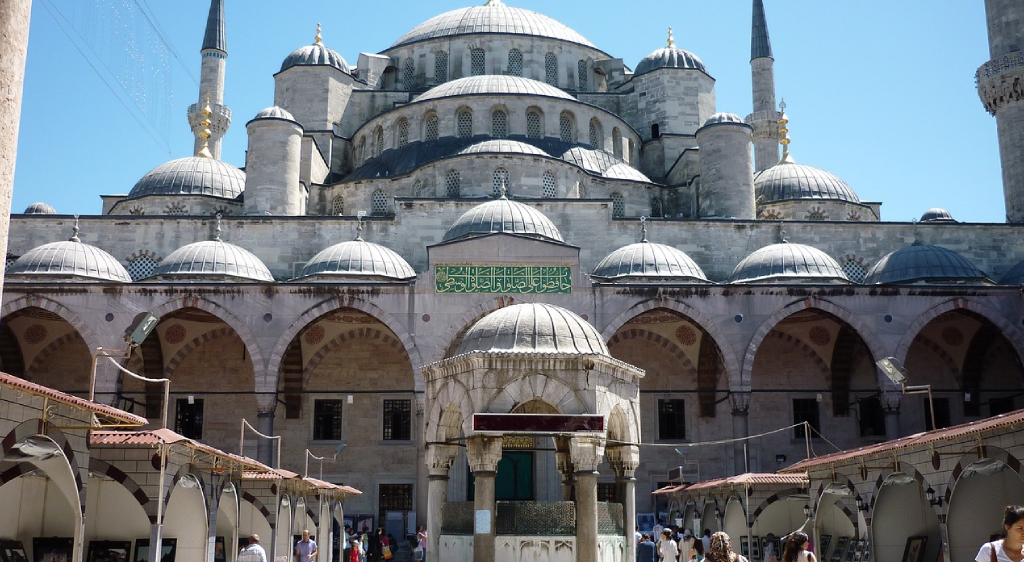
It’s impossible not to be awestruck by the grandeur and beauty of Islamic architecture. Everything about it is magnificent, captivating, and full of elegance. Beyond the sheer majesty of its structures—which is already awe-inspiring—what stands out most is its attention to detail.
For architects, Islamic architecture represents a flawless blend of geometry and decoration, unmatched in its precision. Moreover, each structure was built using the finest materials, coupled with meticulous craftsmanship, to showcase the grandeur of its culture—all achieved centuries ago!
Today, we’ll explore some of the most impressive examples of Islamic architecture, delving into their history and legacy. We’ll see how these masterpieces have withstood the test of time to become universal architectural marvels.
Get ready to embark on a journey through the wonders of Islamic architecture across the globe!
But first, let’s take a closer look…
What are the key features of Islamic architecture?
There’s no doubt that Islamic architecture has left a profound mark on the history of humanity. Its evolution—from the early centuries of Islam to today—represents a blend of functionality, symbolism, and breathtaking aesthetics. One of its most celebrated characteristics is its seamless fusion and integration. Every structure harmoniously incorporates cultural and religious elements that transcend geographical and temporal boundaries. But what are the most defining features of Islamic architecture?

Geometry and repeating patterns
One of the most iconic elements of Islamic architecture is the use of geometric patterns. These designs serve more than just a decorative purpose; they are deeply symbolic. Each pattern reflects the Islamic worldview of God’s greatness and the perfection of His creation. The intricate mosaics, carvings, and geometric designs evoke a sense of continuity and order that captivates anyone who gazes upon them.
These patterns adorn ceilings, walls, floors, and windows, using materials such as ceramics, wood, and plaster to achieve their mesmerizing effect.
Symbolism inside and out
Islamic architecture is rich in symbolism, both in its interiors and exteriors. The mosque, as the centerpiece of Islamic architecture, serves as a spiritual hub. Key features include:
- The mihrab, a niche that indicates the direction of Mecca.
- The minbar, the pulpit from which the imam delivers sermons.
Another essential element is the courtyard, where water is often used as a symbolic feature. Water represents purity and life in Islam, and fountains and reflecting pools enhance the aesthetic while visually expanding the space.
Arches and domes
Arches are a fundamental feature of Islamic architecture and one of its most distinctive elements. Meanwhile, domes—symbolizing the heavens—are often seen crowning mosques, mausoleums, and palaces. A unique architectural feature in Islamic design is muqarnas, or stalactite-like carvings frequently used to embellish interiors with stunning visual complexity.
Calligraphy as an architectural element
Calligraphy is another central feature of Islamic architecture. Since Islam prohibits the depiction of human or animal figures within mosques, calligraphic designs play a significant role. Verses from the Quran or religious phrases adorn walls, domes, and arches, turning the written word into an art form that complements the structure’s overall design.
Integration with the environment
Harmony with the natural environment is one of Islamic architecture’s defining traits. Gardens and interior courtyards serve as tranquil spaces for rest and reflection. They also symbolize the Islamic vision of paradise as described in the Quran. As mentioned earlier, water plays a dual role in this integration, serving as both a decorative and functional element. Fountains and internal channels help regulate temperature and bring refreshing coolness to the spaces.
Materials and construction techniques
Islamic architecture’s connection to nature is evident in its choice of materials. Local resources such as brick, marble, plaster, and wood are commonly used. The skill of artisans is showcased through advanced techniques in carving, glazed ceramics, and painting, elevating every structure into a masterpiece.
Community spaces
Religion lies at the heart of Islamic architecture, but these spaces are designed for more than prayer. Mosques often include areas for education and community gatherings. Additionally, bazaars and public baths are integral features of Islamic architectural works, reflecting a society organized around collective needs.
Islamic architecture is a timeless celebration of spirituality, artistry, and community. Through its distinctive features, it continues to inspire admiration and awe, transcending cultural and historical boundaries.

The iconic works of islamic architecture around the world
Islamic architecture is widely recognized as one of the most fascinating and rich artistic expressions in the world. Its perfection in detail, harmony, symmetry, and deep spiritual influence reflect the core values of Islam. Beyond its intrinsic ties to religion and culture, Islamic architecture stands out as a collection of breathtaking masterpieces.
While listing every iconic work would require volumes, today we focus on five landmarks that have shaped the history of global architecture. Let’s explore:
The Great Mosque of Córdoba, Spain
The Great Mosque of Córdoba is an emblem of Islamic architecture in Europe. Built around 785 CE by Abd al-Rahman I, this mosque seamlessly blends functionality and aesthetics. The forest of columns and the striking two-tone arches are now iconic symbols of Andalusian architecture worldwide.
Beyond its architectural value, the mosque holds immense historical significance. Over centuries, various caliphs expanded its structure. After the Christians reconquest of Córdoba, the mosque was converted into a cathedral, creating a fascinating cultural contrast that visitors can admire today in this Andalusian city.
The Alhambra in Granada, Spain
Spain boasts several of the most remarkable examples of Islamic architecture, largely due to the centuries-long presence of Al-Andalus under Arab rule. Among these, the Alhambra in Granada, Andalusia, is a true jewel.
Built during the 13th and 14th centuries by the Nasrid dynasty, the Alhambra showcases Islamic architectural brilliance. Highlights include the Court of the Lions and the Hall of the Ambassadors, where intricate muqarnas vaults demonstrate exceptional technical and artistic skill. Visitors are also captivated by the stunning gardens, courtyards, and ornate details that adorn every corner of this architectural marvel.
The Sultan Ahmed Mosque, Turkey
Also known as the Blue Mosque, the Sultan Ahmed Mosque in Istanbul is a masterpiece of Islamic architecture. Constructed between 1609 and 1616 by architect Sedefkâr Mehmed Ağa, it remains one of the most iconic Islamic structures globally.
The mosque’s design masterfully combines Byzantine elements with classical Ottoman style. Its nickname, “Blue Mosque,” comes from the over 20,000 Iznik ceramic tiles that decorate its interior in predominantly blue tones. This magnificent building continues to function as a place of worship while standing as a testament to the splendor of the Ottoman Empire.
The Taj Mahal, India
The Taj Mahal in India is perhaps the most famous example of Islamic architecture worldwide. Behind its stunning outside lies one of history’s most beautiful love stories. Mughal Emperor Shah Jahan commissioned the Taj Mahal as a mausoleum for his beloved wife, Mumtaz Mahal, as an eternal declaration of love.
Built primarily of white marble, the Taj Mahal features intricate floral motifs inlaid with precious stones, showcasing the grandeur of Islamic architecture. Its perfect symmetry and serene reflecting pool create a sense of peace and beauty, making it one of the most iconic landmarks in the world.
The Great Mosque of Samarra, Iraq
An impressive example of early Islamic architecture, the Great Mosque of Samarra was built in the 9th century in Iraq. At its peak, it was one of the largest mosques in the world. Its most notable feature is the Malwiyya, a spiraling minaret that exemplifies architectural ingenuity.
Though much of the original structure has suffered from the ravages of time, its influence on Islamic architecture remains undeniable. The mosque’s design reflects the grandeur of the Abbasid Caliphate and its enduring impact on the Islamic world.

Islamic Architecture: A testament to timeless beauty
These iconic works of Islamic architecture exemplify the creativity, technical mastery, and spiritual depth that define the tradition. From Spain to India, these masterpieces continue to inspire awe and admiration, standing as enduring symbols of cultural and historical significance.
The influence of Islamic architecture transcends the boundaries of time and space. Many of its aesthetic and functional principles have seamlessly integrated into modern architecture in remarkable ways. Contemporary architects continue to draw inspiration from the intricate geometric patterns of Islamic art, incorporating these timeless designs into their creations.
Beyond aesthetics, this legacy extends further, particularly in the use of sustainable materials—a trend that modern architecture has embraced but was already a staple of Islamic construction methods centuries ago. Each structure stands as a testament to creativity, blending spirituality and technical mastery to produce enduring works of art.
The unique features of Islamic architecture—such as arches, mosaics, and calligraphy—reflect not only an impressive aesthetic but also a deep connection to the cultural and religious values of Islam. Exploring these architectural wonders is a profound way to appreciate the rich legacy of this tradition and its contributions to human history.
If you’re planning a visit to experience these masterpieces firsthand, prepare for an enriching and unforgettable journey. Language barriers won’t be an issue with Talkao translation apps.
The Talkao Translate app allows you to communicate in over 125 languages, and even if you don’t speak Arabic, the Camera Translator app has you covered. With just your phone, you can understand signs, information, and more.
Discover the meanings behind words and fully immerse yourself in these extraordinary works of human ingenuity.










Newsletter